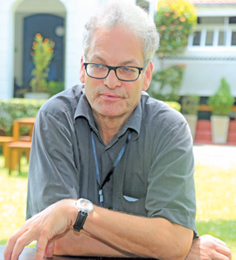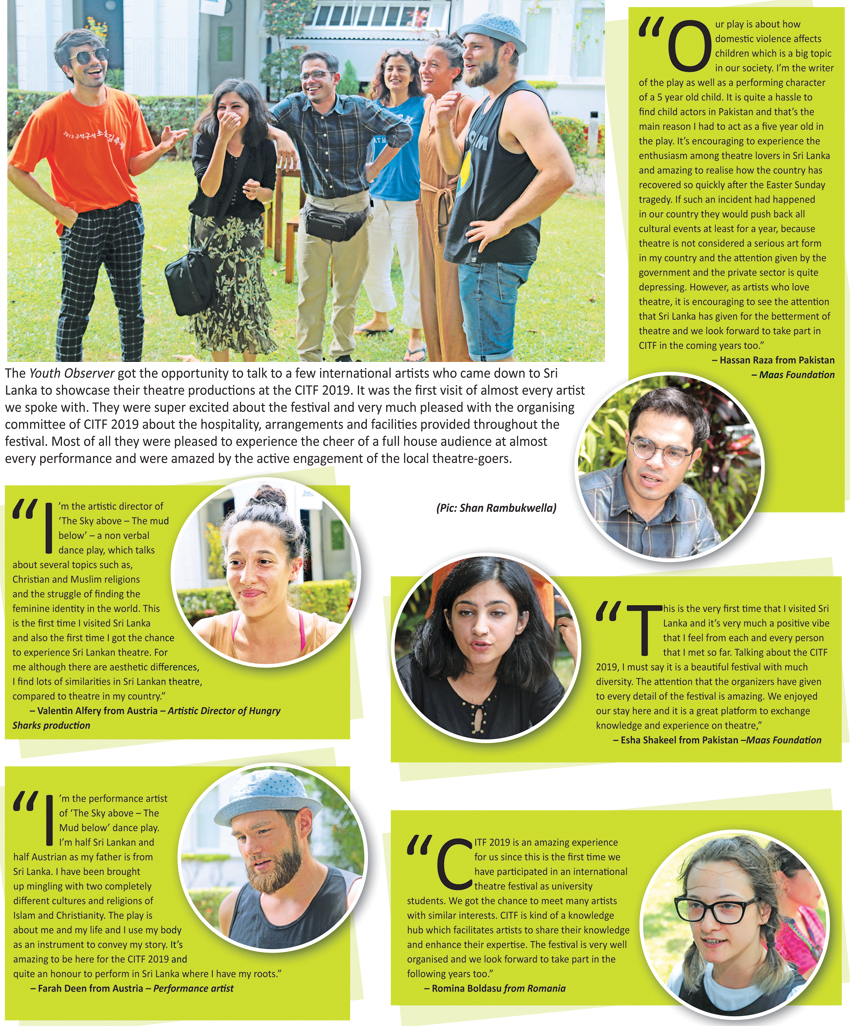
The 8th phase of the Colombo International Theatre Festival 2019 was successfully concluded on a high note last week and the enthusiastic theatre goers have proved that it has became one of the best theatre festivals in the country, dedicated to children’s and young adults’ theatre in Sri Lanka. The festival was characterised by its extraordinary density, aesthetic diversity and high quality of the productions which opened an opportunity for children and young adults to experience and theatre in the other part of the world.
 Thomas Stumpp |
For almost eight years the Colombo International Theatre Festival for young audiences has been conquering a new area of competences in theatre and tapped a new local audience group with an interest in young audience theatre.
“It’s encouraging to see a growing audience every year for the Colombo International Theatre Festival. This time the Festival was able to bring in meaningful theatre productions from all over the world and some productions were made for children in the pre-narrative phase, (i.e. for children even below four years). In other parts of the world the children’s and young adults’ theatre performances are offered not only for children and young adults but also for child caregivers and audiences as young as babies. They use theatre as a form for educational purposes. Initially, if the question about theatre for the very young was determined by debate, this has now given way to a nuanced aesthetic discussion here in Sri Lanka, as well as in other Asian countries, which, I think is a good sign. A main purpose of the Colombo International Theatre Festival is to build a platform to discuss these timely topics in theatre and share the knowledge among theatre practitioners and local audiences in the country,” said M. Safeer the festival director of CITF 2019.
Speaking to Youth Observer, Thomas Stumpp, Head of the Theatre and Dance, Goethe Institut, Germany, chief guest at the CITF 2019 stressed that, “All over the world there’s a debate about the definition of children and young adults and I personally believe it is unfair to segregate an art form considering age as a barrier. It is important to recognize art as a right of every human being to participate irrespective of age. Yet, in most countries children below three years have been excluded from theatre. This exclusion rested on the experience that a very young audience was unable to understand the rules of representative civic theatre.”
Stumpp stressed the importance of understanding the changing trends in theatre in the world through festivals such as CITF, which gives an opportunity for Sri Lankan audiences and theatre practitioners to get exposure to the changing trends. Explaining the trends in theatre especially, in Germany, Stumpp said, “nowadays we focus more on the format of telling a story not so much on its content. That’s the world trend in any form of art. Therefore, the format you choose to tell a story is the key element in any art form. I’m impressed at the enthusiasm shown by theatre lovers of Sri Lanka as well as the theatre practitioners to expand their aesthetic taste and knowledge throughout the festival,”

